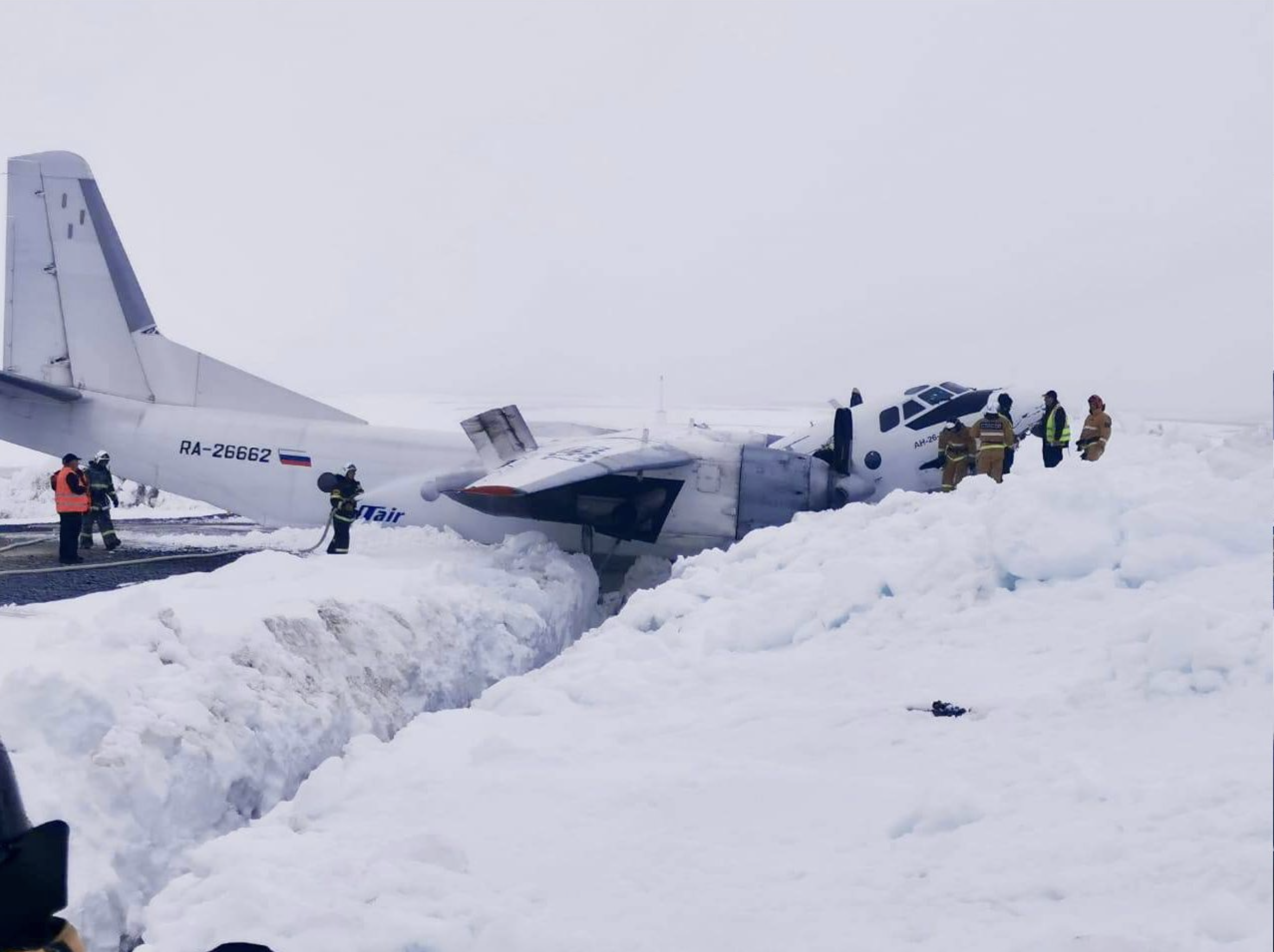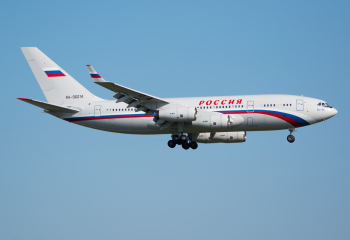Russian authorities are investigating an aviation accident involving a Utair Antonov AN-26 that landed short of the runway near Utrenny Airport in Siberia.

On June 14, a Utair Antonov AN-26 registered RA-26662 was operating a charter flight numbered UTR 9796 between Sabetta Airport and Utrenniy Airport in Siberia. The 45-year-old aircraft was on approach to Utrenniy Airport when the plane struck a perimeter fence around one kilometer (~0.6 miles) short of the runway.
At the time of the crash, the An-26 was carrying 41 people, including crew. According to an official from Russia’s Federal Air Transport Agency, after striking the airport perimeter fence, the aircraft “...slid across the snow before coming to rest in a ditch, causing the forward fuselage to break apart…”
Despite the airframe fracture and break-up, only the two pilots and one female passenger onboard sustained minor injuries, with no one requiring hospitalization. Preliminary reports filed by Russian authorities claim that “...visibility due to fog was a contributing factor…” to the crash.
The two airports of Sabetta and Utrenniy are just 84 kilometers (52 miles) apart from each other but are separated by the Gulf of Ob. The area around the Gulf of Ob has been developing (including the addition of a small port) due to the presence of Natural Gas in the area, which has created a Liquid Natural Gas (LNG) venture in and around Sabetta. This in turn has led to the growth of the local economy.
Flying In Siberia
Often-times, flying in Siberia can be a dangerous endeavor. This remote, northern region of Russia is known for its rapidly changing weather and environmental conditions that make flying challenging. For this reason, many airlines operate Soviet-era planes on their flights in Siberia due to their hardiness in extreme and instrument (low visibility) weather conditions. A common favorite used in Siberia is the Yakovlev Yak-40 and many Antonov propeller planes such as the AN-24 and AN-26.
While some Siberian airports such as Norilsk (NSK) and Vorkuta (VKT) have paved runways, many airports that are crucial to the survival of Siberian settlements do not. For this reason, hardy aircraft that can land on gravel and dirt runways such as the AN-26, are popular choices for Russian airlines to operate flights in Siberia.
About Utair
Utair is the sixth-largest airline in Russia. The carrier was founded in February of 1967 as a part of the (then) Soviet flag carrier Aeroflot. Since Utair's splitting from Aeroflot in 1991, the airline has grown to have an official fleet of 63 aircraft, all of which are western-made Boeing or Airbuses. The airline also has a fleet of Soviet-era helicopters and passenger aircraft, but they do not appear on aircraft registries in the West and thus the exact number of them still operating is unknown.
Currently, Utair has two primary hubs - one at Moscow Vnukovo International Airport (VKO) in the Russian capital - and another major hub at Surgut International Airport (SGC) in the Ural Mountains region of Russia.
After the Russian invasion of Ukraine in February 2022, Utair, along with other Russian airlines, registered their western-registered aircraft with the Russian aviation authority. As a result, most of the formerly western-registered aircraft that Russian airlines refused to return to western lessors were given Russian registrations. This “mass theft” of aircraft also affected Utair, as most of its Boeing aircraft, which were leased from Irish and western lessors, were registered in Bermuda.
Could You Survive a Plane Crash? The Unlikely Science of Plane Crash Survival » Passengers Encounter Bedbug Infestation on Multiple Turkish Airlines Flights » Emirates Dismisses Viral A330 Plane Crash Video as "Fabricated and Untrue" »
Comments (0)
Add Your Comment
SHARE
TAGS
NEWS Utair Aeroflot Russia Siberia Antonov AN-26RECENTLY PUBLISHED
 Could You Survive a Plane Crash? The Unlikely Science of Plane Crash Survival
With air travel consistently being heralded as the safest form of public transport, most of us do not board a plane pondering our chances of survival in the event of a crash. But, is it possible to survive one?
INFORMATIONAL
READ MORE »
Could You Survive a Plane Crash? The Unlikely Science of Plane Crash Survival
With air travel consistently being heralded as the safest form of public transport, most of us do not board a plane pondering our chances of survival in the event of a crash. But, is it possible to survive one?
INFORMATIONAL
READ MORE »
 Maldivian Airlines Introduces First-Ever Widebody Aircraft, Plans New China Flights
Maldivian, the government-owned national airline of the Maldives, has just welcomed its first-ever wide body aircraft: the Airbus A330-200. With the new aircraft, the carrier also plans brand-new long haul international flights to China.
NEWS
READ MORE »
Maldivian Airlines Introduces First-Ever Widebody Aircraft, Plans New China Flights
Maldivian, the government-owned national airline of the Maldives, has just welcomed its first-ever wide body aircraft: the Airbus A330-200. With the new aircraft, the carrier also plans brand-new long haul international flights to China.
NEWS
READ MORE »
 Thousands of Flights Impacted as Winter Storm Blair Hits U.S.
Winter Storm Blair has unleashed a huge blast of snow, ice, and freezing temperatures across the Central and Eastern United States.
As of Sunday afternoon, over 6,700 flights and counting have been disrupted. This includes cancelations and significant delays leaving passengers scrambling to change flights and adjust travel plans.
NEWS
READ MORE »
Thousands of Flights Impacted as Winter Storm Blair Hits U.S.
Winter Storm Blair has unleashed a huge blast of snow, ice, and freezing temperatures across the Central and Eastern United States.
As of Sunday afternoon, over 6,700 flights and counting have been disrupted. This includes cancelations and significant delays leaving passengers scrambling to change flights and adjust travel plans.
NEWS
READ MORE »





